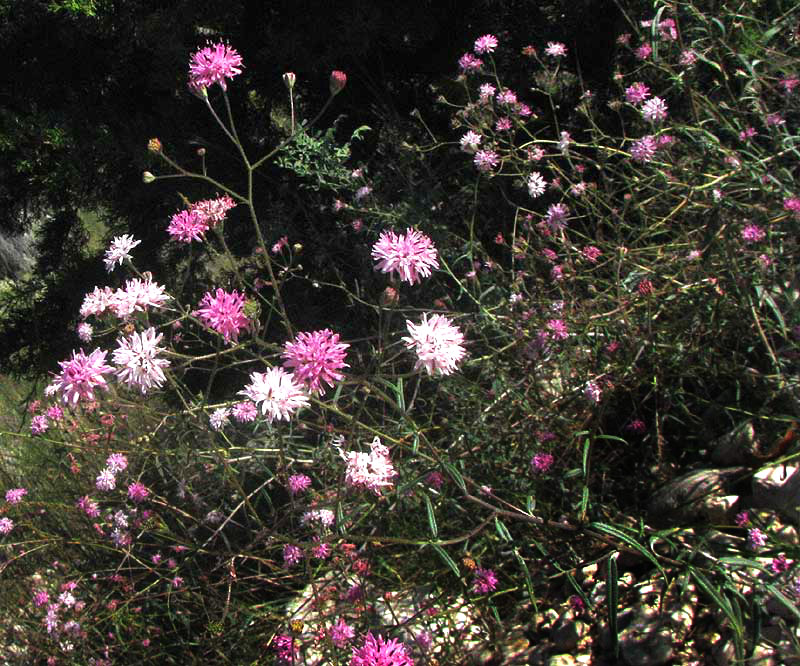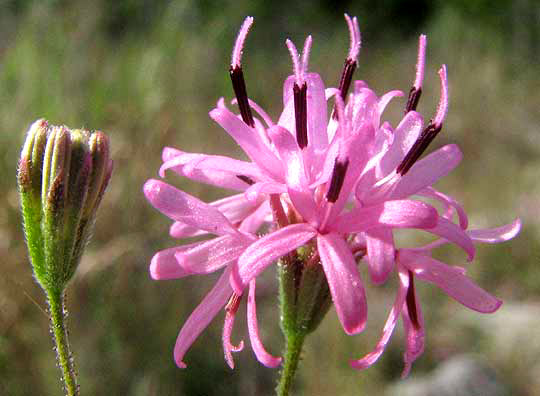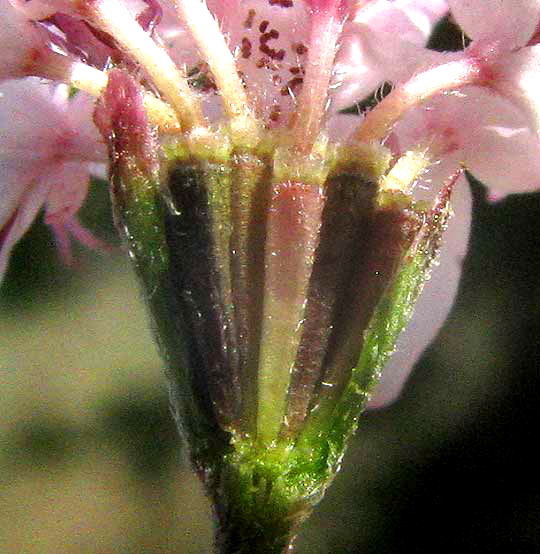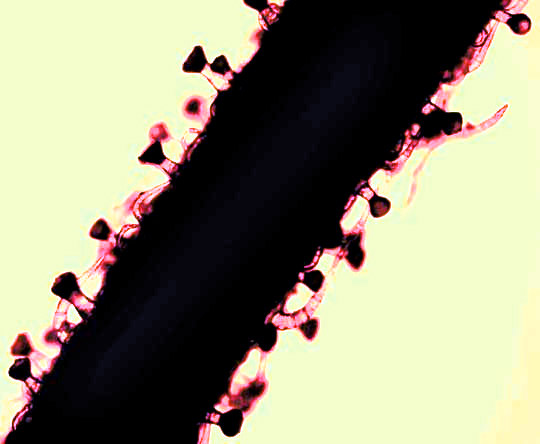Excerpts from Jim Conrad's
Naturalist Newsletter

from the the October 21, 2012 Newsletter issued from the valley of the Dry Frio River in northern Uvalde County, southwestern Texas, on the southern border of the Edwards Plateau; elevation ~1750m (~5750 ft); N29.62°, W99.86°; USA
PALAFOXIA
Though its individual pale to dark pink flowering heads aren't particularly spectacular, averaging only about 7/16ths-inch across (1cm), nowadays a certain wildflower is so abundant in certain spots and producing so many flowers that you can't avoid noticing them. A cluster of one plant's flowering heads, looking like miniature Carnations, is shown above.
A close-up of one of the heads appears below:

That picture shows that the plant is a member of the Composite or Sunflower Family, but that the heads lack petal-like ray flowers around their perimeters, so that the heads consist only of deeply lobed disk flowers. In most composite flowers, disk flowers are found only in the head's "eye."
A close-up showing a broken-apart head in which the individual flowers' maturing achene-type fruits are shown packed closely together is shown below:

In that picture it's worth looking at the tops of each achene, to see pappi a bit different from those we usually encounter. Most often when we pay attention to an achene's pappus it's composed of a ring of slender, white hairs surrounding the cylindrical base of the corolla. Such pappi will mature into "parachutes" atop the achene fruits -- such as the white fuzz atop a Dandelion's achene. That fuzz helps the achene disseminate on the wind. This wildflower's pappus, very different from that, consists of a ring of papery, hairy scales. In wildflower identification, pappus type is very important. Seeing these scales, we can automatically omit many other Composite Family members with heads consisting only of pink, deeply lobed disk flowers, but with different kinds of pappi.
Another good field mark for this species is that its stems are heavily invested with glandular hairs. A microscopic shot of a peduncle right below a flower head shows dark, flat-topped glands atop stubby hairs mingled with sharply pointed, segmented hairs, or trichomes, bent at their bases so that they point upward, as seen below:

The most common English name for this attractive and locally abundant wildflower is Small Palafoxia. It's PALAFOXIA CALLOSA, distributed mostly on soils derived from limestone throughout most of Texas, up into Arkansas and Missouri, and south into northern Mexico. Around here Small Palafoxia is specially abundant on gravel bars of the little Dry Frio River.
During all my years of wildflowering this is the first time I've run across the genus Palafoxia, despite the genus embracing twelve species, of which ten occur in the US. Palafoxias in general are thought of as drought-tolerant, annual herbs growing on sandy plains, dunes, deserts (Mojave and Sonoran Deserts) rangeland and, in our case, limestone soils. Bees, butterflies and birds are attracted to them, and certain butterfly caterpillars feed on them. The genus is named in honor of General José Palafox, 1776–1847, Duke of Zaragoza, Spain, who fought against Napoleon's armies.